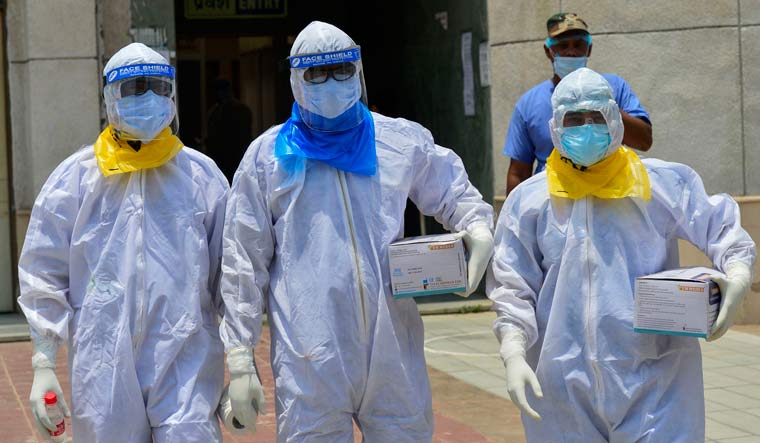A sizeable section of Indian population is still susceptible to catch SARS-CoV-2 virus, and measures such as social distancing, use of masks and testing, need to be emphasised, Dr Vinod K. Paul said at a press briefing today. He was speaking at the release of the findings of the sero-prevalence survey by the ICMR.
The ICMR’s antibody-based study (IgG antibodies) done in 83 districts, and involving 26,400 individuals, has revealed that less than one per cent—0.73 per cent—Indians have been exposed to the virus. “What this means is that a large number of people are still susceptible to the virus. Risk is higher in urban areas (1.09) and urban slums (1.89) than in rural areas,” said Dr Balram Bhargava, director general, ICMR. Sero-surveys are done every six-eight weeks, and more will be done in the future, he said.
The infection fatality rate was 0.08 per cent, according to the survey. The term infection fatality rate is different from the case fatality rate in that it includes both detected and undetected (asymptomatic) cases in the population.
The survey was done in the third week of May, and represent the situation (incidence) of cases as on April 30, since IgG antibodies take about 15 days to develop, Paul said.
However, the second part of the antibody-based survey in containment zones has revealed that the infection in containment zones is high. That study is still going on, the ICMR said.
Based on the results on the general population, both Paul and Bhargava stressed on the need for local lockdown measures to continue, protection of high-risk population such as the elderly, those with chronic morbidities, pregnant women and children under 10. “States cannot lower their guard. Once the results of the part 2 of the survey that is being done in the containment zones, are finalised, we will share the results with the states if they want to change their strategy on the perimeter of these zones,” Bhargava said.
For the states, testing was also emphasised in the backdrop of the survey results, and according to Bhargava, states had been advised to do so. “We have ramped up testing dramatically. We have calibrated guidelines, and capacity of doing up to 2 lakh tests per day,” he added.
India is not in community transmission, he insisted. “It’s only a term that is used. But we have to continue our strategy of testing, tracing, tracking and quarantine. We should not give up our guard.”
His remarks came on a day India saw the highest single-day spike of 357 fatalities and 9,996 cases, pushing the death toll to 8,102 and the nationwide tally to 2,86,579. According to Union Health Ministry data, the country has registered over 9,500 cases for the seventh day in a row, while the figure for casualties crossed the 300-mark for the first time.



